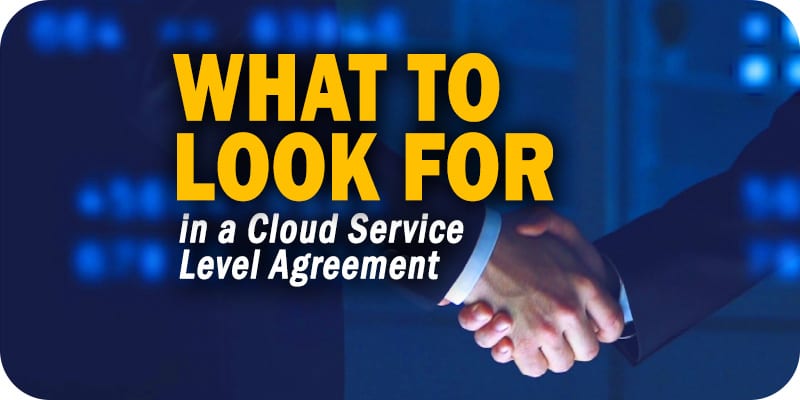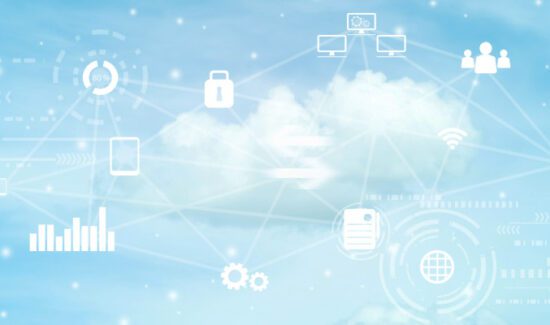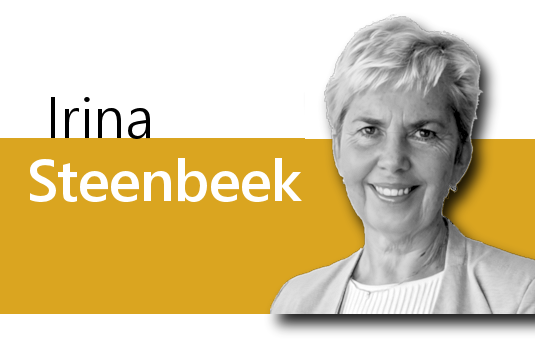5 Things to Look For in a Cloud Service Level Agreement


Look for these five critical details in your cloud service level agreement.
If you decide to integrate a cloud environment into your enterprise, you’ll need to sign a service level agreement (SLA) presented by the cloud provider. An SLA outlines what the provider and customer are responsible for in regards to using the service. The contract lets users know upfront what specifically the cloud provider implements and manages. It also gives customers knowledge of what they need to contribute to keep using the service.
Every provider’s SLA is different, but there are some concepts that should be included in any SLA. These concepts are necessary for both the provider and user to maintain a healthy relationship with each other. They outline the fundamental responsibilities and guarantees that bind both parties. In order to ensure a provider’s SLA covers everything it needs to, we’ve outlined 5 topics that you should look for in an SLA. These topics give you the essential knowledge you need as a potential customer before you fully commit.
Availability
The biggest quality-of-service (QoS) concept that should be covered in any SLA is the provider’s promised availability. Providers might break down availability depending on time frame – for example, they might promise 99.99% availability during business hours. These terms should also include the provider’s plan for unexpected downtime, including alerting its users and providing updates on maintenance and service repairs.
Data ownership
Who owns your data in the cloud? That question prevents many enterprises from making the jump to the cloud, especially when they consider sensitive data. An SLA should specifically outline its data ownership policies so that everything is transparent and clear. Ideally, an SLA should state that all ownership rights stick with the user. However, if the provider doesn’t explicitly state its data ownership policies in the SLA, you can’t guarantee the safety of your information.
Cloud hardware and software
Your cloud provider requires the use of hardware and (potentially) software to operate its services. The provider should outline the hardware that the cloud services rely on, including servers and other devices. Knowing your cloud’s equipment and software specifications will help you understand the specifics behind your cloud environment’s construction. and what you’ll need to educate your staff on.
Disaster recovery and backup
In the event of a disaster, your cloud provider should have a plan in place to prevent total loss of your data. Cloud providers should have a section of the SLA that describes their disaster recovery and backup solutions in detail. Depending on the provider, they may provide automatic backups and snapshots of your data. If the user is required to set up backup and recovery systems, the SLA should outline that. It may not specifically state how to activate them, but you should be aware if you need to activate them or not.
Customer responsibilities
The SLA is a contract that outlines responsibilities that both the provider and customer agree to. Your cloud provider needs to inform you of what you’re liable for when you enter the agreement. It could be its own section or sprinkled throughout the agreement, but it must tell you what’s expected of you. Make sure you mull over the entirety of the SLA to know what your provider will manage and what you need to as a customer.
Our MSP Buyer’s Guide contains profiles on the top cloud MSP vendors for AWS, Azure, and Google Cloud, as well as questions you should ask providers and yourself before buying.
Check us out on Twitter for the latest in Cloud news and developments!





















